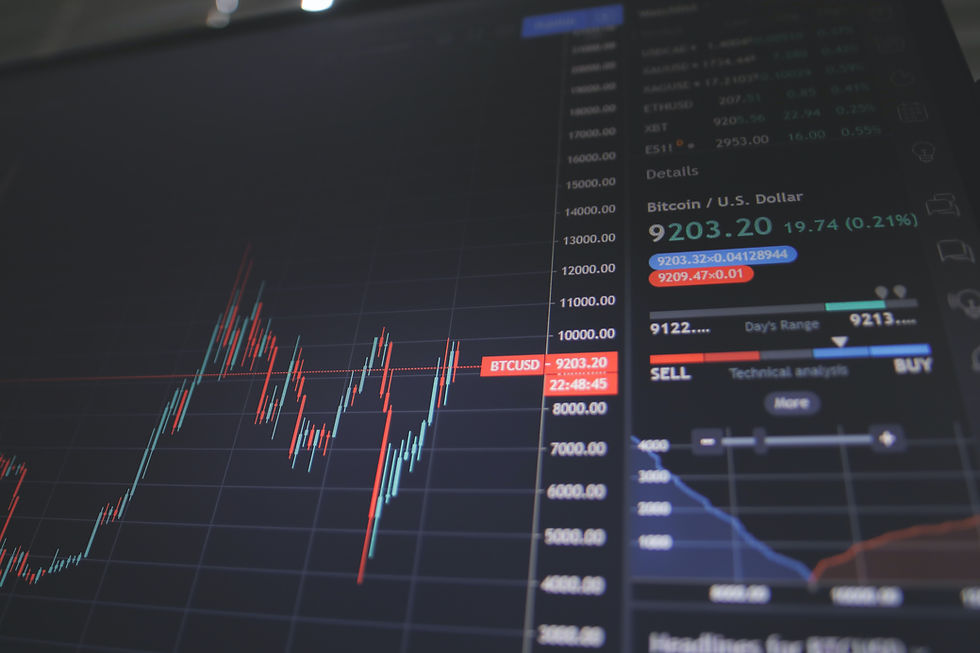Hawkish Central Banks & Interest Rate Impact on Loan Proceeds
- buntingventures
- Sep 2, 2022
- 3 min read
Summary:
Asset values are heavily impacted by interest rates
Central banks control and change interest rates at part of their monetary policy and mandates
Interest rate increases can cause investors to rotate into risk-free assets
Interest rate changes have unique impacts on different asset classes
Introduction:
Economists often assert that asset bubbles are associated with variations in the borrowing market (interest rates, etc.) to fund risky asset purchases. An asset bubble can be defined as prices for assets, such as equities, fixed income, and real estate, rising exponentially over a period of time beyond fundamental values. The current broad investment market is widely regarded as being in bubble territory as inflation continues to rip through the global economy. This blog post provides a brief overview of central banks, the risk-free rate, the impact of rate changes on various asset classes, and a live model walk through of the interest rate impact on loan proceeds. A free downloadable Microsoft Excel pro forma model highlighting the impact of rates on loan proceeds is available at the end of this post.
Central Banks & Interest Rates: Central banks, such as the U.S. Federal Reserve, typically have a mandate to promote maximum employment, stabilize prices, and moderate long-term interest rates. Central banks endeavor to achieve this mandate through a variety of monetary policies, with one of the most common levers being short-term adjustments to interest rates.
If economic growth is lagging and unemployment is rising, lower interest rates make it cheaper to borrow, which should stimulate economic growth. If the economy is growing quickly, there may be concerns about inflation or other issues related to exponential growth. In this case, interest rates can be raised causing borrowing costs to increase, which will result in lower investment, reduced consumer spending, and lower employment.
Risk-Free Rate:
As interest rates rise, asset prices fall because investors can receive a higher return on a risk-free investment. Conversely as interest rates fall, asset prices rise as investors rotate away from risk-free investments. A major focus is on changes in borrowing costs arising from variation in the riskless interest rate, which may result from a variety of causes. The most notable cause, which is highly relevant at the current moment is central bank policy actions, which we briefly described above.
Impact on Stocks:
Interest rate changes do not directly impact the stock market; however, the ripple effect of monetary policy will impact stock values. Increased interest rates from central banks results in higher interest rates offered by banks to businesses and consumers for loans. Increased borrowing costs results in lower consumer spending and reduced investment and expansion for businesses. Increased interest rates typically occur during periods of economic strength, which could coincide with a bull market. Interest rates could also be increasing due to runaway inflation and a weakening economy, resulting in a recession, which would negatively impact stock values. It is uncertain what will happen with stocks during periods of increased interest rates. The best approach is to maintain a balanced portfolio.
Impact on Bonds:
Bonds and interest rates have an inverse relationship. This means when interest rates increase, bond values decrease, and vice versa. If you own a bond with a 2% interest rate and current interest rates are 5%, there will be newly issued bonds available at the higher interest rate (5%), making the previously issued bonds (2%) worth less.
Impact on Real Estate:
Interest rate hikes can be detrimental to real estate, while a reduction can be beneficial. Real estate prices are closely linked to interest rates, in part due to mortgage rates and in part due to some bond-like characteristics derived from the regular income payments. Similar to bonds, the relatively steady stream of income generated by real estate becomes less attractive as interest rates and coupons on newly issued bonds rise.
Interest Rate Impact Summary:
The table below summarizes the impact of interest rate increases and decreases on stocks, bonds, and real estate:

Illustrating Interest Rate Impacts with a Live Financial Modeling Case Study:
To illustrate the impact of interest rates, let’s analyze the impact on mortgage proceeds given a fixed monthly payment and loan term at various interest rate levels. This case study is presented in the below live model walkthrough with the completed file available for free download:



Comments